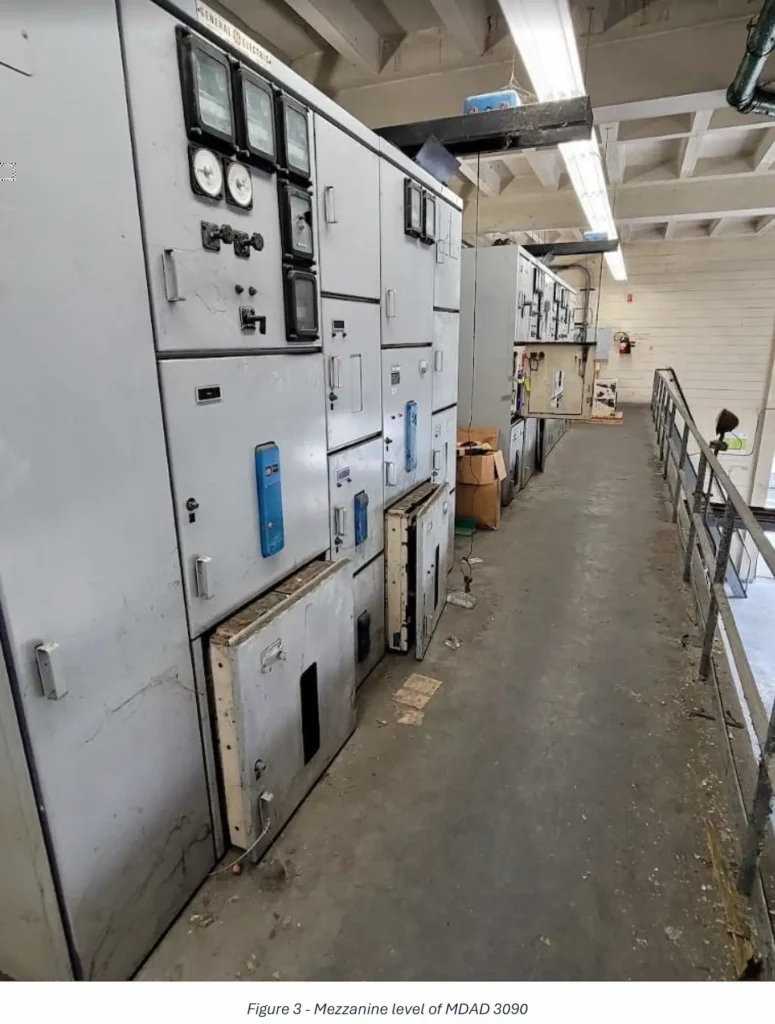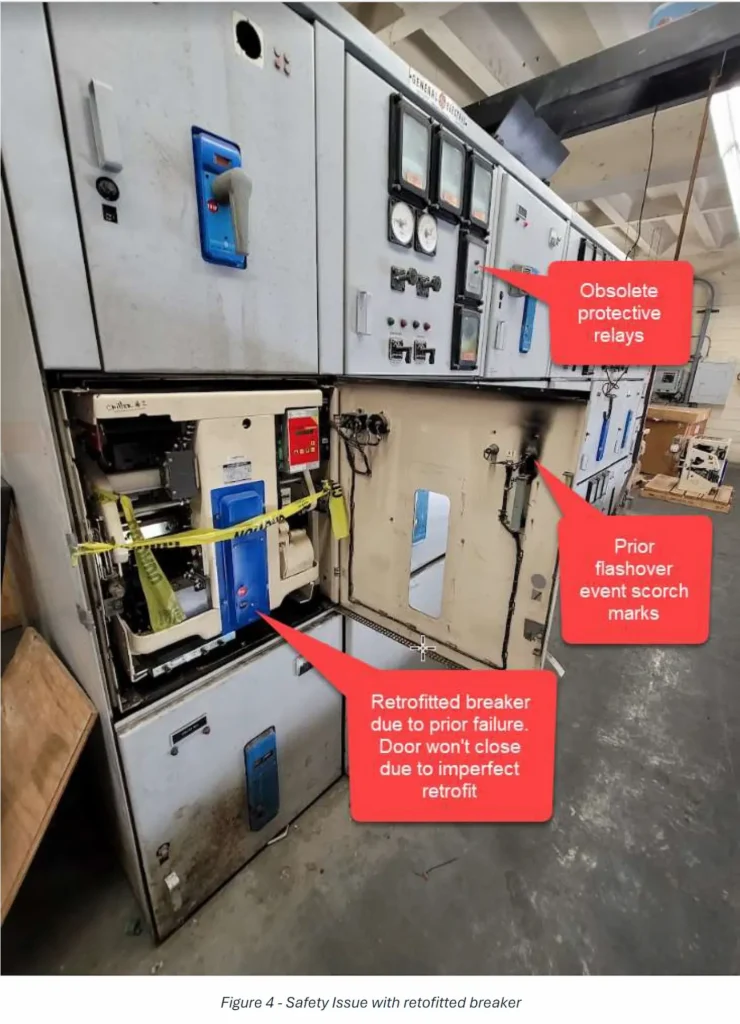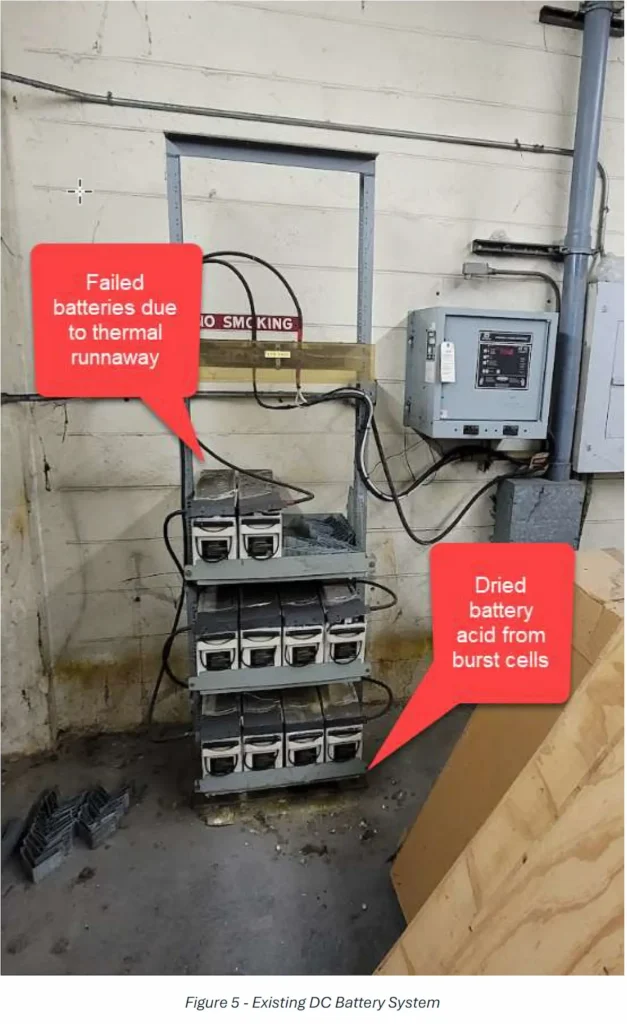|
Getting your Trinity Audio player ready... |
Tabla de Contenido/ Table of Contents
- 1 How Did Miami International Airport Reach This Critical Situation?: A Comprehensive Analysis of Building 3090 and the Modernization Plan
- 2 MIA: A Critical Infrastructure in Decline and the Inaction of Its Leaders
- 3 2. Evaluation of Conditions: Building 3090
- 4 3. Modernization Plan for Building 3090
- 5 4. Financial Feasibility of the Project
- 6 5. Impact on Fuel and Electricity Consumption
- 7 6. Why Was Action Not Taken Earlier?
- 8 7. Role of MIA’s Management and Political Leadership
- 9 8. Where Are the Responsible Parties, and Who Pays for the Negligence?
- 10 9. Conclusion and Recommendations
- 11 10. Frequently Asked Questions (FAQs)
- 12 Final Reflection
How Did Miami International Airport Reach This Critical Situation?: A Comprehensive Analysis of Building 3090 and the Modernization Plan
The case of Building 3090 at Miami International Airport (MIA) exposes serious challenges in electrical infrastructure that not only affect the airport’s operations but also its ability to adapt to future demands. This analysis focuses on the technical and financial feasibility of the modernization project while addressing key questions about administrative management, funding, and lessons learned.
MIA: A Critical Infrastructure in Decline and the Inaction of Its Leaders
Building 3090 is a critical piece of MIA’s electrical system, but its obsolete and deteriorated infrastructure represents a significant operational risk. A technical analysis conducted by Florida Power & Light Services (FPL) proposed a comprehensive plan to modernize this space. This article explores the project details, financial feasibility, and the implications of the proposed modernization.




2. Evaluation of Conditions: Building 3090
The FPL technical report identified several issues contributing to the deterioration of Building 3090:
1. Electrical System
- Generator: The existing emergency generator failed years ago and was replaced with a rented unit, increasing operational costs.
- Switchgear: Obsolete and discontinued for over 50 years, presenting safety risks with exposed energized components.
- Electrical Demand: While current demand is low due to vacant adjacent buildings, the system is designed to support a much higher load.
2. Building Conditions
- Asbestos: Identified in the space, requiring remediation before construction begins.
- Ventilation and Air Conditioning: Sealing exterior vents and adding air conditioning systems are proposed to protect electrical equipment and prevent corrosion.
3. Modernization Plan for Building 3090
FPL proposes a design-bid-build model to address the current deficiencies:
Conceptual Solution
- Tier 2 Diesel Generators: Two 1500 kW units designed to meet hurricane resistance standards and ensure 48 hours of continuous operation.
- Electrical Distribution Systems: Modern Main-Tie-Main configuration with cellular-based remote monitoring.
Structural Improvements
- Sealing vents to enable air conditioning installation.
- Adding air handlers, leveraging existing cooling systems.
Temporary Power Plan
During construction, continuous operations will be ensured through a robust temporary power plan.
4. Financial Feasibility of the Project
The project will be financed through FPL’s OSPS program, with fixed monthly payments over 20 years.
Estimated Costs
| Monthly Payment | Range |
|---|---|
| High Estimate | $77,684.90 |
| Low Estimate | $64,737.42 |
| Annual Cost | $776,849.04 – $932,218.80 |
| Total Cost (20 years) | $15,536,980 – $18,644,376 |
Payments cover construction, maintenance, emergency support, and repairs, starting once the system becomes operational.
5. Impact on Fuel and Electricity Consumption
Fuel Consumption
- No significant changes: Generators will operate exclusively in emergencies, maintaining fuel costs as a variable expense.
Electricity Consumption
- No net impact: The backup system will not affect base electricity consumption, as its function is strictly for emergencies.
6. Why Was Action Not Taken Earlier?
This analysis raises critical questions about MIA’s management:
- Lack of planning: Why didn’t the management team conduct a similar analysis before the infrastructure reached this critical point?
- Prolonged inaction: Why was the airport allowed to rely on a rented generator for years, incurring additional costs and operational risks?
7. Role of MIA’s Management and Political Leadership
Rahf Cutie and MIA Leadership
As director, Rahf Cutie has overseen airport operations for years. However, his failure to anticipate and address the issues at Building 3090 reflects significant gaps in strategic management.
Political Leadership
Daniella Levine Cava, as mayor, and commissioners such as Kevin Marino Cabrera and Raquel Regalado, bear responsibility for supervising critical infrastructure at MIA. Despite regular meetings, they failed to conduct thorough inspections or prioritize preventive maintenance.

8. Where Are the Responsible Parties, and Who Pays for the Negligence?
The critical condition of Building 3090 at Miami International Airport (MIA) is more than a technical issue; it reflects years of administrative negligence and lack of oversight. In such cases, the inevitable question arises: who is responsible, and who bears the cost of the consequences?
The Chain of Responsibility: Where Were the Leaders?
Responsibility starts with the airport’s management, led by Rahf Cutie, who has been in charge of MIA for years. Under his leadership, the essential electrical system of Building 3090 deteriorated to a critical state. Why weren’t preventive and predictive maintenance strategies implemented? Why was the electrical equipment allowed to reach the end of its useful life without a modernization plan?
But the burden of responsibility doesn’t lie solely with him. Political leadership also plays a role. Daniella Levine Cava, the county mayor since 2019, along with commissioners such as Raquel Regalado and Kevin Cabrera, are obligated to oversee and prioritize critical projects like this. For years, they participated in weekly meetings regarding the airport’s progress. Why weren’t thorough inspections conducted? Why weren’t problems identified and resolved before reaching this point?
The Consequences of Inaction
The deterioration of the electrical infrastructure didn’t happen overnight. The issues identified in the Florida Power & Light Services (FPL) report—such as reliance on a rented generator for years or the lack of spare parts for obsolete equipment—clearly indicate a lack of strategic planning. This level of inaction not only jeopardizes airport operations but also generates costs that ultimately fall on taxpayers.
Who Pays for This Negligence?
The short answer is: the citizens of Miami-Dade County.
The project to modernize Building 3090 is estimated to cost between $15.5 million and $18.6 million over 20 years. This money will come from county resources, meaning residents end up paying for poor administrative decisions.
- Additional operational costs: For years, the airport relied on a rented generator, resulting in unnecessary expenses that could have been avoided with a long-term solution.
- Lack of financial planning: The county failed to establish capital reserves to modernize critical equipment, forcing reliance on long-term contracts that, while necessary, could have been optimized with prior planning.
And the Responsible Parties?
In cases like this, those at fault often evade direct consequences. Directors retain their positions, while political leaders argue that the problems were “inherited.” However, this is not a valid excuse. Public and administrative roles come with a responsibility that cannot be ignored, and it is essential to:
- Demand accountability: Political and administrative leaders must explain why preventive measures weren’t taken and what barriers prevented timely action.
- Independent audits: Evaluate the decisions made by MIA’s management and political leaders over the past few years to identify specific failures in oversight.
- Apply proper sanctions: If negligence is proven, administrative and political penalties must be enforced. Neglect cannot go unpunished.
Can Something Similar Be Prevented in the Future?
The lesson here is clear: the lack of preventive maintenance and strategic inaction comes at a high cost. If those responsible are not held accountable, the message sent is that negligence can be repeated without real consequences.
The Building 3090 project is an opportunity for Miami-Dade County to demonstrate that it can correct course. But this will only be possible if the responsible parties acknowledge their part in the problem and clear policies are implemented to ensure such situations don’t happen again.
9. Conclusion and Recommendations
Conclusion
The modernization project for Building 3090 has clear technical and financial feasibility, with minimal operational impact and significant benefits for MIA’s resilience. Furthermore, this initial project will serve as a model for future airport upgrades.
Recommendations
- Immediate Action: Proceed with the energy backup services agreement before December 2024 to ensure the system is operational by 2026.
- Predictive Maintenance: Implement proactive strategies to prevent other critical systems from reaching similar levels of deterioration.
- Transparent Oversight: Demand greater accountability from MIA’s leadership and political representatives to avoid future crises.
10. Frequently Asked Questions (FAQs)
1. What problems does Building 3090 face?
It suffers from outdated electrical systems, reliance on a rented generator, and structural issues like asbestos.
2. How much will the project cost?
Monthly payments are estimated between $64,737.42 and $77,684.90, totaling up to $18 million over 20 years.
3. How will the project affect passengers?
It will reduce the risk of electrical failures, improving airport safety and operations.
4. What Will the Commercial Agreement for the Project Look Like?
The tariff program regulated by FPL, called Optional Supplemental Power Services (OSPS), allows resilience to be offered as a service. FPL is responsible for owning, installing, and maintaining the equipment for 20 years, including warranty and repairs. The cost is set as a monthly payment over that period, based on the actual costs of construction, operation, and maintenance. Payments begin when the equipment starts operating.
The construction and implementation in Building 3090 are estimated to take approximately two years from the signing of the agreement, subject to permits, procurement, and market factors.
5. Why wasn’t action taken earlier?
Technical analyses and preventive maintenance strategies were lacking, leading to reliance on temporary solutions.
6. When will the system be ready?
If approved in 2024, the system will be operational by 2026.
Final Reflection
The case of Building 3090 highlights the importance of prioritizing preventive maintenance and strategic planning in critical infrastructure. While the proposed project is a step toward energy resilience, it’s crucial to ensure that lessons learned guide future administrative and policy decisions.
Want more post like this?
Head over to our homepage for the latest updates from South Florida and beyond:











